TALKING SHOP MAY 17 2023
by Design Miami
4 historical design specialists spotlight their favorite 20th-century design masters

ANDRÉ MONPOIX AND ALAIN RICHARD/ SOFA 195, C. 1953-1954
Photo courtesy of Galerie Pascal Cuisinier
As design enthusiasts, we all have our favorite historical icons. These masterful creators embody all that we love about the artform, whether it’s a unique flair for form, inspiring conceptual innovations, excellence in craftsmanship, or all of these facets rolled into one.
Today, we’re comparing notes with four experts in historical design to find out which 20th-century talents they idolize most and why. Our panel includes Robert Aibel of Moderne Gallery in Philadelphia, specialized in the American Studio Craft movement; Rossella Colombari of Galleria Rossella Colombari in Milan, specialized in architect-designers from Italy; Pascal Cuisinier of Galerie Pascal Cuisinier in Paris, specialized in France’s first generation of modernist designers; and Bernard Goldberg and Ken Sims of Bernard Goldberg Fine Arts in New York City, specialized in the pioneers of modernism in the US.
Scroll on to discover their design heroes, and see if yours are on the list…

FRANK LLOYD WRIGHT/ FRANK LLOYD WRIGHT IN 1954 | BROWNE'S BOOKSTORE LIGHT FIXTURE, C. 1907 | C. LEIGH STEVENS HOUSE AULDBRASS CHAIR, C. 1940
Photos © Bernard Goldberg Fine Arts
“A ‘design hero’ that we champion at Bernard Goldberg Fine Arts is architect-designer Frank Lloyd Wright. He not only transformed architecture in the US, but he showed us how we can live, and live well, in a modern home. His furniture designs achieve a remarkable equilibrium between organic materials, architectural and sculptural form, and a modern interior style.” —Bernard Goldberg and Ken Sims of Bernard Goldberg Fine Arts
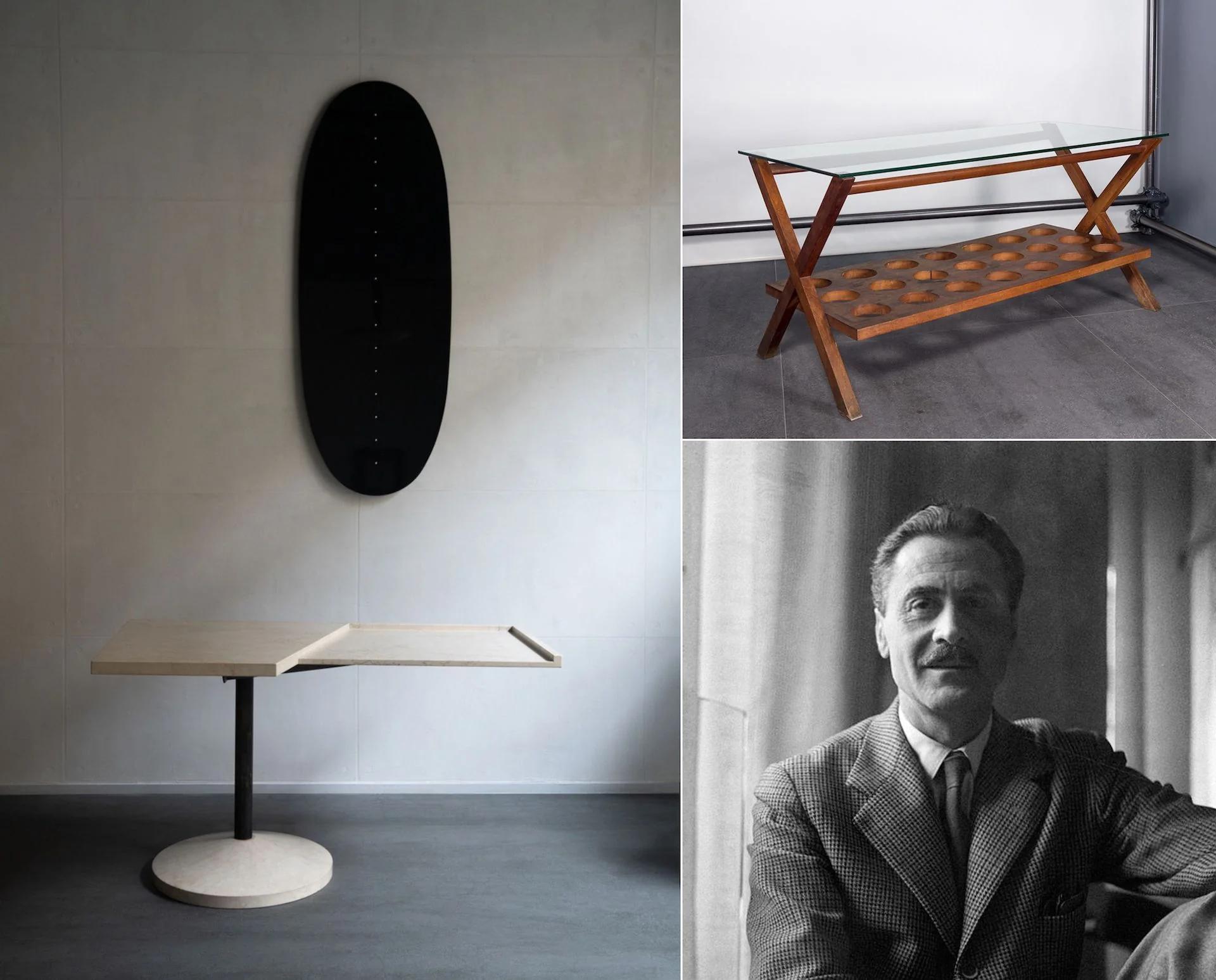
FRANCO ALBINI/ STADERA DESK PROTOTYPE FOR INA OFFICES, 1950S | VILLA NEUFFER SIDE TABLE, C. 1941 | FRANCO ALBINI IN 1956
Left: Photo © Gabriela Gonzalez Rubio for Galleria Rossella Colombari | Top: Photo © Galleria Rossella Colombari | Bottom: Photo via Wikicommons
“Architect, designer, and urban planner Franco Albini synthesizes functionalism and essentialism. An inventor of new forms and an anticipator of tastes, he interpreted Italian rationalism as a methodology for construction rather than a purely formalistic geometric style. His furniture is purposeful, comfortable, and light—elegant yet sober—with resolved proportions that result from careful planning. His seemingly simple designs, if broken down into constituent elements, reveal a complexity of engineering and joinery.” —Rossella Colombari of Galleria Rossella Colombari

GEORGE NAKASHIMA/ GEORGE NAKASHIMA | CUSTOM CABINET, 1985-86 | MINGUREN II ENGLISH OAK BURL COFFEE TABLE, 1966 | KARUIZAWA CHAIR, 1938
Left: Photo © George Nakashima Woodworkers, Photos courtesy of Moderne Gallery
“Architect and master craftsman George Nakashima's unique, holistic approach changed how the world's views wood; how this natural material can be used to make functional yet sculptural furniture and lighting. He is rightfully recognized around the world as one of the most important and influential designers of the 20th century, and his impact on the course of design history since 1940 cannot be underestimated.” —Robert Aibel of Moderne Gallery
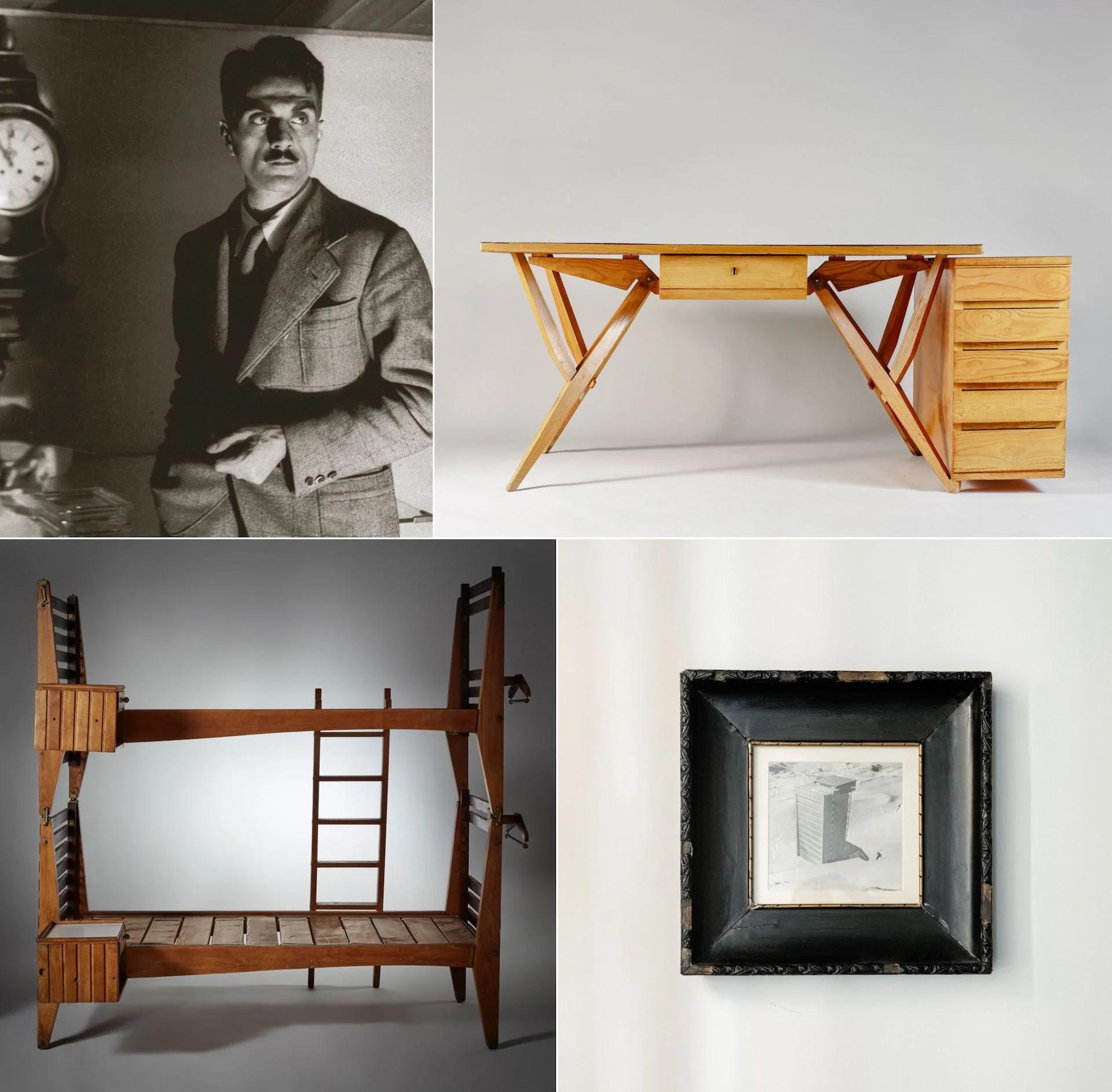
CARLO MOLLINO/ CLOCKWISE FROM TOP LEFT: CARLO MOLLINO IN 1938 | LATTES PUBLISHING HOUSE DESK, 1954 | PAIR OF STACKABLE BEDS, 1955 | RARE SCIATORE PHOTOMONTAGE, 1955
Clockwise from top left: Photo via Wikicommons | Photo © Federico Torra for Galleria Rossella Colombari | Photo © Galleria Rossella Colombari | Photo © Gabriela Gonzalez Rubio for Galleria Rossella Colombari
“Carlo Mollino is one of the few architects who, in a prolific era like that of the 1940s and ’50s, was able to create entirely original works. He conceived objects and furniture with biomorphic, cultured, and sensual forms expressed through artisanal construction techniques. Even in his most daring designs, the forms remain functional and devoid of superfluous ornamentation. On a personal note, the work of this brilliant talent holds a strong emotional weight for me and has kept me company throughout my life. My adventure with Mollino has been ruled by a set of mysterious, evocative, and irrational influences and affinities, which trace back to our shared love for the mountains and skiing, to our passion for archaeology, and to the psychic culture of mediums in the city of Turin, where we both grew up.” —Rossella Colombari of Galleria Rossella Colombari
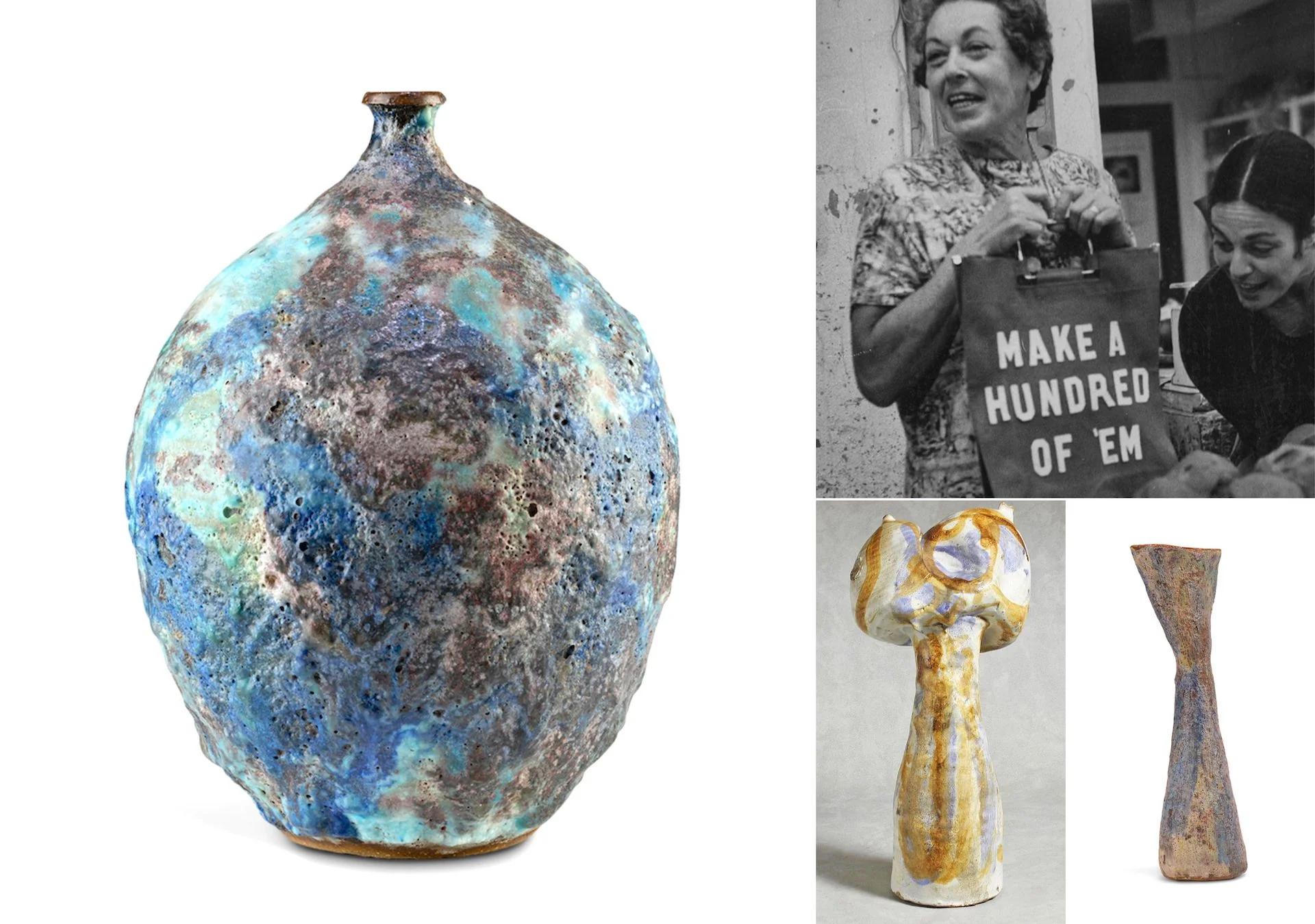
ESTELLE HALPER AND HER WORK: VESSEL, C. 1960 | ORGANIC SCULPTURE, C. 1970 | VESSEL, C. 1970
Photos courtesy of Moderne Gallery
“Still deserving of wider attention, Estelle Halper was an acclaimed ceramic artist who trained at Greenwich House Pottery and the Art Students League, both in Manhattan, where she studied with Peter Voulkos, James Crumrine, Ilsa Rothmer, Bernard Leach, and Shōji Hamada. She went on to become a devoted teacher and mother who never stopped making innovative ceramic forms that were enlivened by the unique colors and textures she achieved through her ongoing glaze experiments.” —Robert Aibel of Moderne Gallery
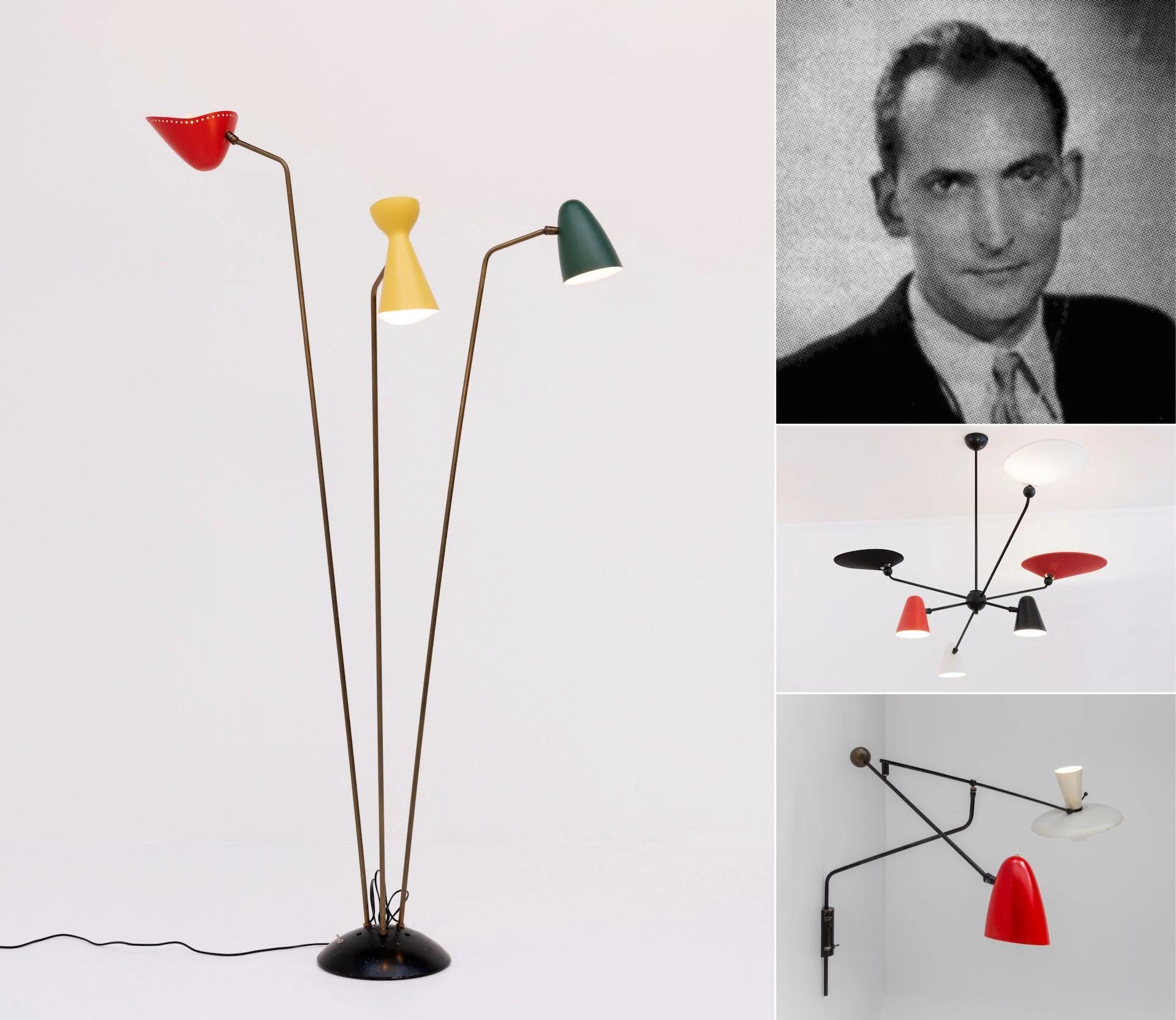
ROBERT MATHIEU AND HIS WORKS: 361 FLOWER-FROG FLOOR LAMP, C. 1955 | SIX-BRANCH PENDANT LAMP, C. 1954 | SCONCE WITH DOUBLE COUNTERWEIGHT, C. 1954
Photos courtesy of Galerie Pascal Cuisinier
“Robert Mathieu is very special to me, because he worked more like an artist than a designer—and this differentiates him from the other creators I represent. For me, a designer is someone who conceives objects in all their aspects: functional, technical, and aesthetic. A designer draws the design and then gives it to a manufacturer to be mass produced. But Mathieu had his own workshop and made his pieces himself, in the same manner as an artist, which generated very original forms of practical creativity, achieving a dynamic balance and high quality of execution. Thanks to his commitment to micro-production, his works are very rare today.” —Pascal Cuisinier of Galerie Pascal Cuisinier
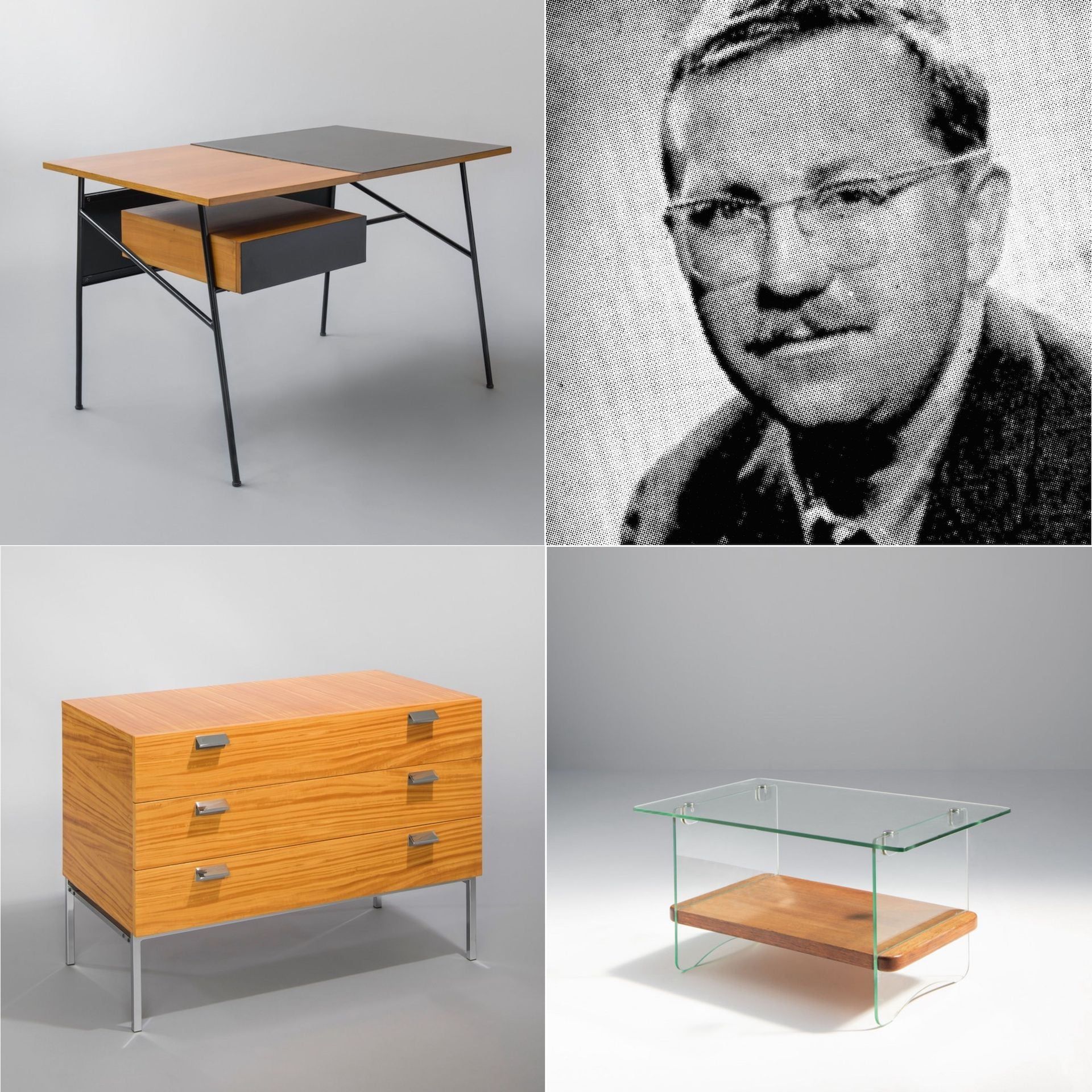
ANDRÉ MONPOIX AND HIS WORKS: 204 DESK, C. 1954 | 812 CHEST OF DRAWERS, C. 1956-57 | GLASS LOW TABLE, C. 1950-51
Photos courtesy of Galerie Pascal Cuisinier
“André Monpoix is special to me, because his work inspired me to specialize in what is often called France’s ‘first generation of designers,’ which remains my focus to this day. As I confess sometimes, I didn’t even know him when I first encountered and purchased one of his designs, the 812 Chest of Drawers from the 1950s. But I can remember that I was just stunned by this piece—the radicalism of its lines, its perfectly proportioned form, and the elegance that emanated from it. As a former architect, the design spoke to me and, after some research, led me to his contemporaries, such as Pierre Guariche, Joseph-André Motte, Pierre Paulin, Robert Mathieu, and so many others. By a twist of fate, my current Parisian apartment was designed by Monpoix for Victor Vecchione, who was the producer of the 812 Chest of Drawers. Unfortunately Monpoix died young, so he had a short career. Despite some important projects—like the Musée du Louvre with Paulin, for example, some public commissions for the French government, and some models prototyped with the Mobilier National—he remains less recognized than others of his generation.” —Pascal Cuisinier of Galerie Pascal Cuisinier
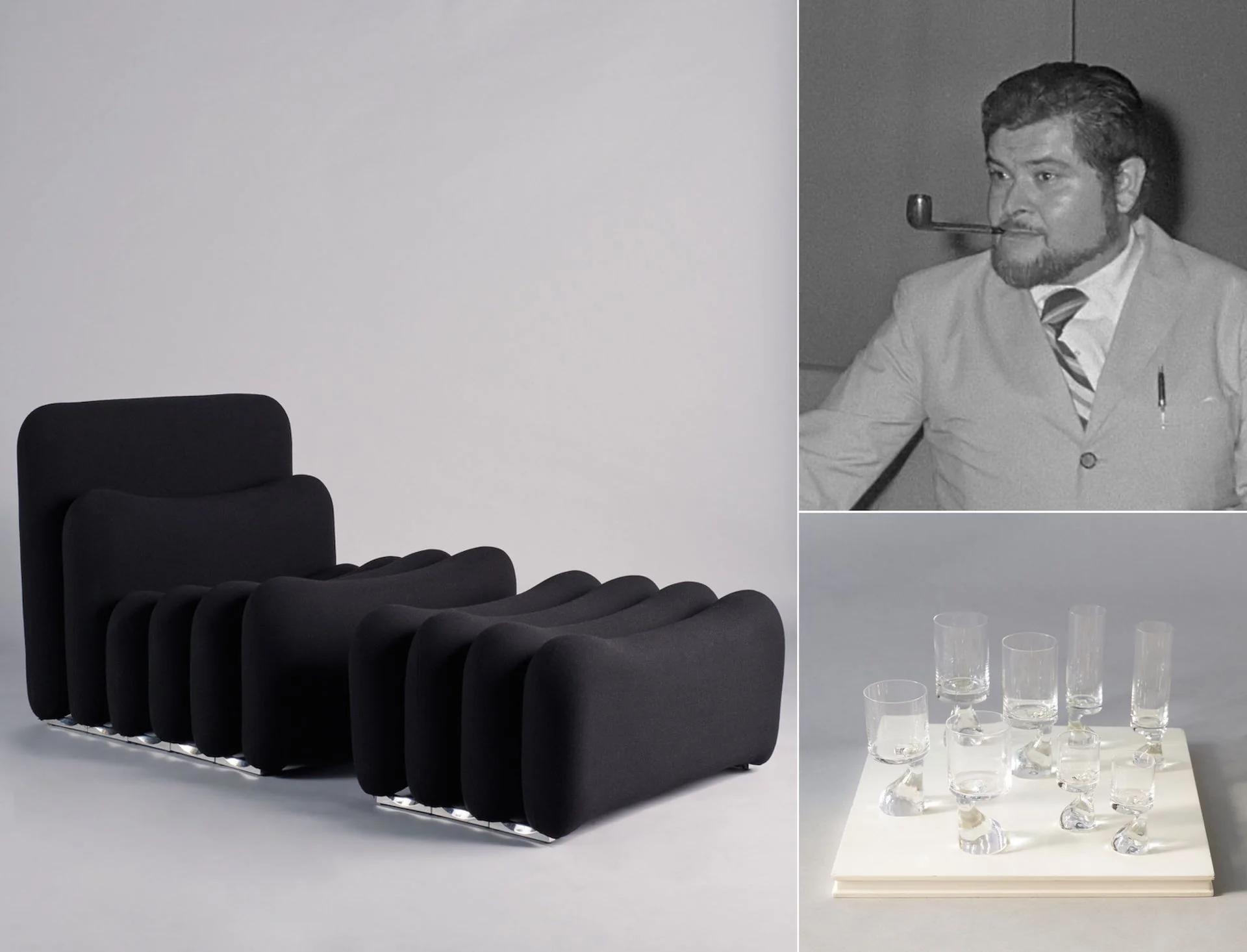
JOE COLOMBO IN 1969 | ADDITIONAL SYSTEM ARMCHAIR & OTTOMAN FOR SORMANI, 1968 | ASIMMETRICO GLASSES FOR RIEDEL, C. 1960S
Photos © Federico Torra for Galleria Rossella Colombari
“When I think of architect Joe Colombo's work and its futuristic style, Stanley Kubrick's film 2001: A Space Odyssey comes to mind. Colombo holds an important place in the history of industrial aesthetics in the second half of the 20th century, because he reconciled imagination, beauty, and functionality. The design of his objects derived from their necessity and from the development of new technologies and materials, such as plastic. He studied everyday objects deeply and was among the first to create modular furniture techniques and integrated micro-environments.” —Rossella Colombari of Galleria Rossella Colombari
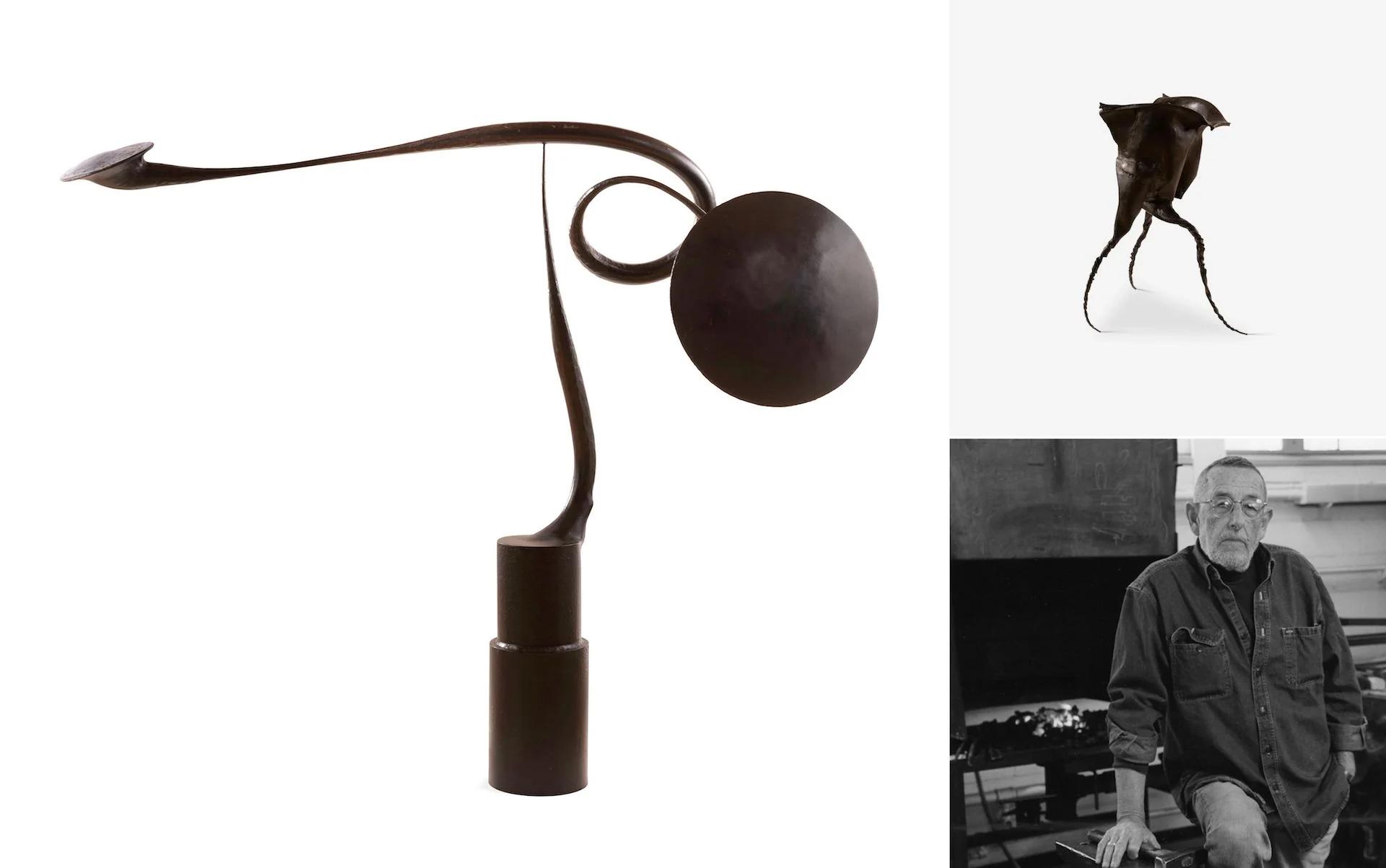
L. BRENT KINGTON AND HIS WORKS: WEATHERVANE, C. 1979 | PLANTER, C. 1972
Photos courtesy of Moderne Gallery
“L. Brent Kington is credited with re-introducing metal craft as an artform in the US. After receiving his Master’s degree from Cranbrook Academy of Art in 1961, Kington became a Professor of Metalsmithing at Southern Illinois University, Carbondale, where he established this country’s only accredited Bachelor and Master of Fine Arts programs in blacksmithing. Kington’s influence still resonates today through the hundreds of working artists he taught personally and through those who still make their way through the programs he founded at SIU.” —Robert Aibel of Moderne Gallery


